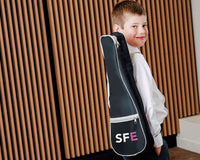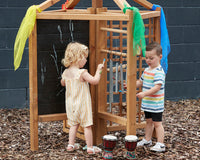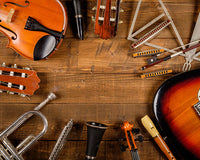The flute is a beautiful sounding instrument that is a woodwind instrument. Most woodwind instruments include reeds but the flute is different. It is known as a reedless wind instrument as it produces its sound when you blow across the opening and then the flow of air oscillates, creating the sound. It is played by being held sideways holding the flute with both hands and blowing across the hole. With the pitch being altered by using your fingers to open and close the keys/holes.
Flutes are one of the earliest known instruments, with flutes dating back to about 43,000 years ago.
The main 3 types of flute are the standard, piccolo and harmony flutes. I'm going to talk you through these flutes and the features of them:
Standard Flute
Standard flutes are available for all levels and abilities. This makes them a great instrument to learn. You can purchase Montreux and Nuvo flutes at great prices. Along with great Yamaha packages available as well.
Standard flute is about 2 feet long and made of silver, gold or platinum. When played in an orchestra the flute usually plays the melody.
Our most popular flute is the Montreux, which is available as a standard straight-head model, or for the younger/smaller player, as a curved-head model (which also contains the straight head for when the child grows!).
Higher-end, semi-professional Flutes have the same key structure and design, but the added quality is achieved through the use of a solid silver headjoint; precious metal = precious and deeper tone! You will not find bwetter value for money when looking for this sold silver variant, than the wonderful Montreux Flute.
The Piccolo
The piccolo is a lot smaller in length compared to the flute. Did you know that piccolo means small in Italian? The smallest of the flute family, the piccolo measures approximately half the length of the concert flute. It’s the highest pitched flute (in the key of C) sounding an octave higher than the concert flute when played. Concert band music often has a piccolo part and so this is a common instrument for flute players to double on. Piccolos can be made from a variety of metals and most commonly the hardwood grenadilla. There is some solo repertoire, concertos and chamber music written for piccolos. The timbre of the piccolo can be described as clear, brilliant and graceful in its middle register, and piercing and shrill when played loudly in its upper register.
The Plastic Flute
The plastic flute is great and allows younger children to get involved and learn this great instrument. It's suitable for all levels; although most commonly used for beginners due to its "first note" mouthpiece. This allows the player to get a good sound when they first play.
The interchangeable parts means the instrument can be used at different levels- from beginner to advanced. Meaning it's adaptable and can last a bit longer as the player improves.
They are available in lots of great bright colours. It's lightweight, durable and easy to keep clean.
Thanks for reading if you have any questions or you are interested in purchasing a flute please contact the sales team via email: sales@normans.co.uk or call: 01283 535333.























